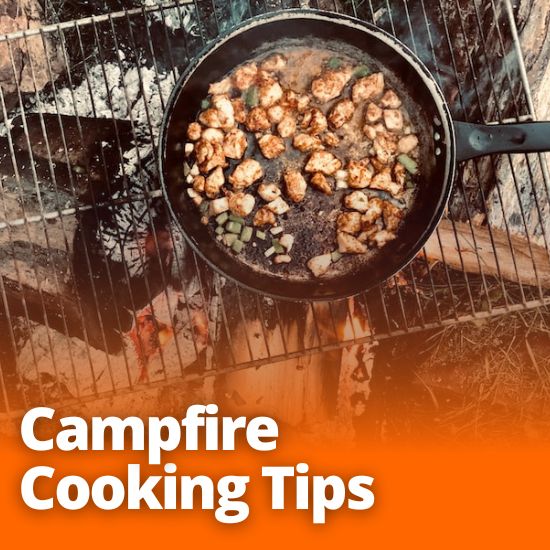
Take It Back Now Ya’ll - Campfire Cooking Tips
Man make fire, fire make man god.
In Greek mythology, the Titan Prometheus is credited with stealing fire from the gods to give to man, allowing them to elevate themselves through technology and civilization. Whether you believe a god gifted mankind fire, or that some of our hairy ancestors hit a couple rocks together to make a spark, fire brought humans light and life – and probably kept our species from dying of dysentery.
However, it’s not as easy as putting some meat over a fire these days, and why should it be! We may be cooking with the feats of our ancestors from over two million years ago, but that doesn’t mean we have to eat like we are. But in order to achieve it, there are some critical differences in equipment and technique to learn first.
Not as Easy as It Seems
Look, at this point we’re all masters of the hot dog on a stick. We’re taking it back to the “Stone Age” and using good ole’ fire to get ourselves fed. So now we have to learn how to not only make a fire, but maintain one and how to monitor the food we’re cooking.
Most of the time we’ll be cooking in low-lighting or with little to no prep space. Plus, a limited amount of kitchen equipment. So yeah, not super easy but not as difficult as it can be if you have the right supplies and knowledge.
Cooking Tips!
The Right Kind of Fire: A big, roaring fire can be tempting but not the best for cooking. The best advice I can offer is to build your fire in just half of your campsite’s fire ring or pit. This leaves the other half to spread out hot coals for consistent cooking (and can allow you to place things like foil packets or your Dutch oven directly on the coals)
Don’t use all your wood at once, but keep your fire steady and consistent by regularly feeding it. This will help produce a steady supply of hot coals and keep your temperature consistent so your food will cook properly.
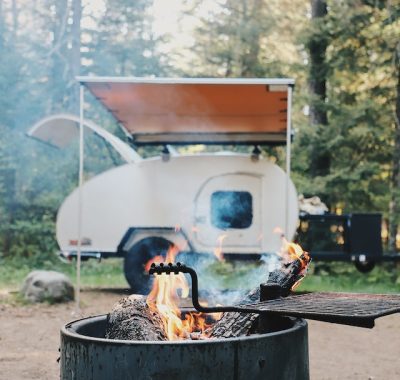
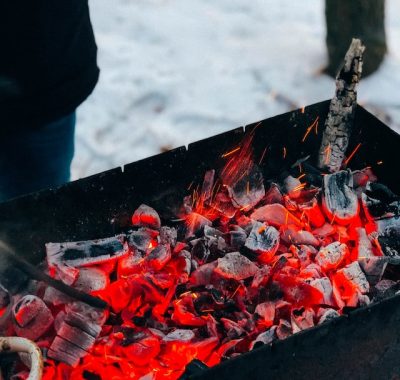
Let Your Fire Burn Down: Be patient, high-quality campfire cooked meals come from hot coals rather than direct flames. Allow your wood to burn for a bit until it’s hot and glowing. Remember that direct flames will char the exterior of your food before the internal temperature goes up.
Don’t use all your wood at once, but keep your fire steady and consistent by regularly feeding it. This will help produce a steady supply of hot coals and keep your temperature consistent so your food will cook properly.
Use the Right Equipment: For example, if you’re using a recipe that calls for a Dutch oven, don’t make it in a cast iron skillet. You can avoid a surprising number of cooking issues by using the right equipment for each recipe. Don’t try and fit the square peg in the round hole, it rarely works out.
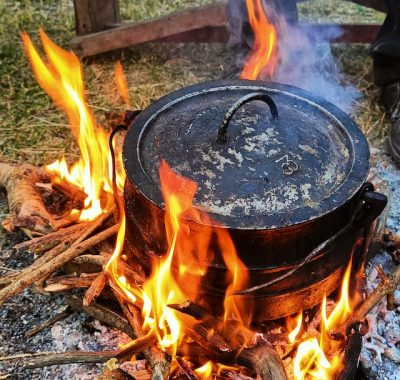
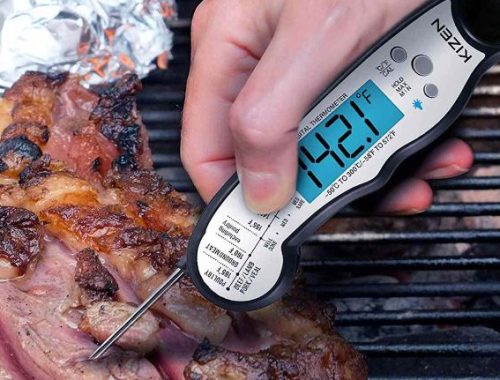
Use a Meat Thermometer! This will help you cook any meat to the perfect temperature! No more dry chicken or well-done steak! It will also help you know you’ve reached a safe internal temp for your food, cooking in the low light or chaotic conditions of a campsite makes it more difficult to ensure your meat is done.
Beef, pork, and lamb: 160°F
Chicken, turkey: 165°F or more.
If you’re ever unsure, you can double check this Chart
Prep Ahead of Time!
We do our best to make notes in our recipes on where you can save time by prepping meals in your home kitchen, but there may be other methods that work better for you both at home or at camp! Particularly for shorter excursions, doing as much at-home meal prep can save you both a ton of time and space!
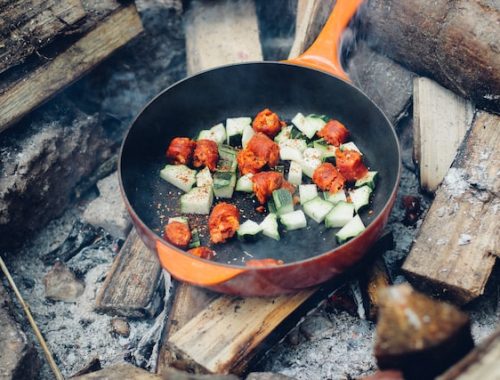
Supplies
Depending on how often you’re planning to cook and what, your camp cooking kit can be super simple or more elaborate. That’s up to personal preference, but here are a few items that will allow you a wide variety of meal options.
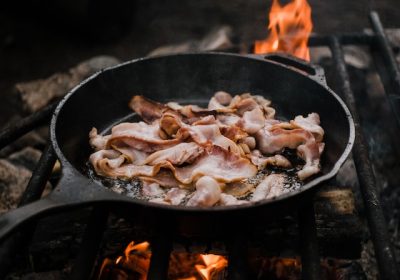
Cast Iron Skillet: This is one of the best things to invest in for your kit. It’s super versatile and trustworthy, and if taken care of properly will last forever. It can stand up to the intense heat of the campfire and will actually thrive in it due to its construction.
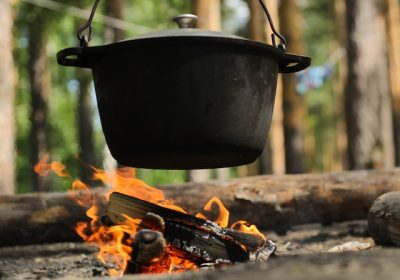
Dutch Oven: This is a general term for any thick walled, heavy cooking pot with a lid that seals reasonably tightly. Most for camping are unfinished cast iron, but you’re probably also familiar with home models coated in ceramic or other coatings – like Le Cruset. You don’t have to spend that much though, you can often find more affordable models.
Dutch ovens are great because they absorb heat evenly for cooking and the heavy lids trap steam and heat for long cooking recipes.
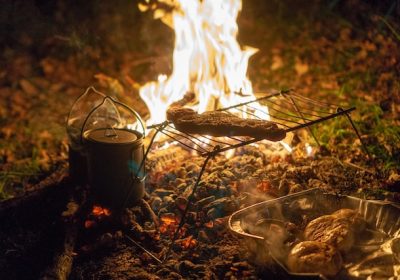
Campfire Cooking Grates: Unless all of your cooking is going to be on a stick over the fire (or you’re able to cook directly on the coals), you’ll need a cooking grate. They come in different sizes but generally are able to be folded or disassembled for transport and storage. These are heat proof and can be used for grilling or roasting, and a place to set a cast iron pan or Dutch oven for cooking.
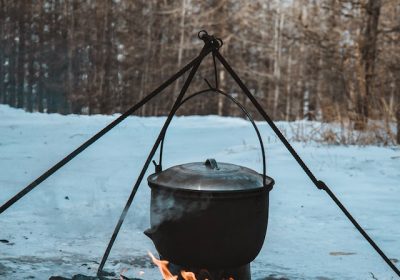
Campfire Cooking Tripod: You can hang a Dutch oven or similar vessel over the fire with a tripod. It’s exactly what it sounds like, and probably one of the most old-school set ups that hasn’t really changed since its inception. Tripods are made up of three legs that come together in a triangle over the fire and include a chain or hook to hang your pot or pan. They’re usually pretty affordable and can easily expand your cooking possibilities.
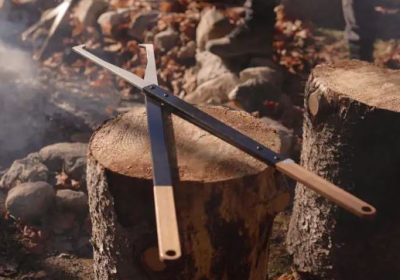
Firewood Tongs: These can be handy to keep around to help you add and move firewood while cooking so you can have a little extra control over your fire and coals.
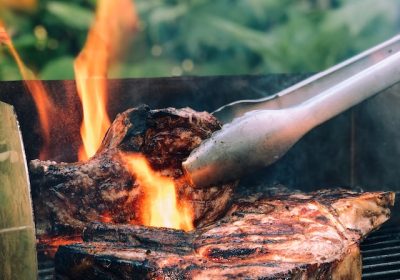
Food Tongs: Small and inexpensive, these are crucial to help cook your food. Make sure your tongs can withstand the high, direct heat from your campfire. You don’t want them melting in your dinner!

Campfire Spatula: Much like the tongs, this is another crucial utensil. A sturdy but flexible spatula will save you a lot of frustration and can be a great addition. I recommend one with a longer handle to avoid burning off your arm hair!
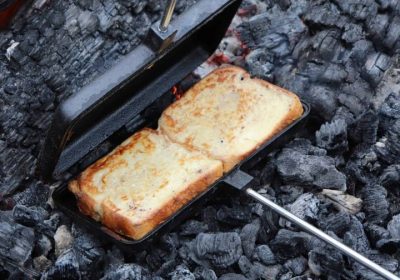
Pie Iron: These are essentially two cast iron pans hinged together, like a waffle iron on a stick! They can be used for a variety of sandwich style meals which are great to eat by hand!
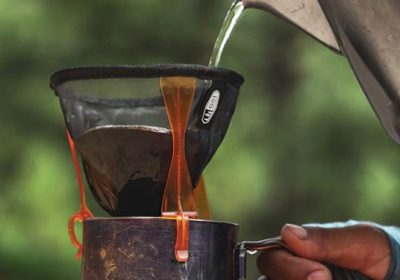
Percolator/Coffee Press/Pour-Over Coffee:
There are few things more satisfying than waking up, getting a fire going, and enjoying a good, hot drink in the woods – and you don’t need a massive drip coffee machine to achieve it! There are a bunch of smaller, more easily packable coffee making devices on the market.
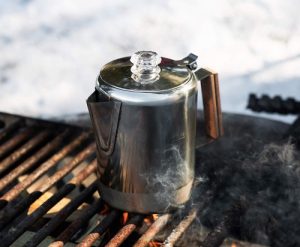
Percolator: Does exactly as the name implies, you fill the reservoir with water, add ground coffee and set over the fire. The heat will boil the water and percolate it up into the grounds.
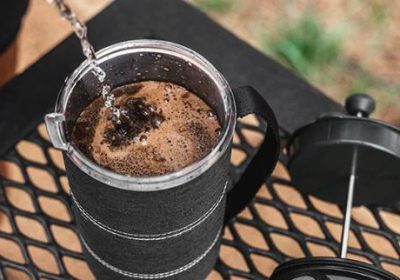
Coffee Press: In this case you’ll need a kettle, but it can be great for groups or if you have a tea drinker in your midst so you aren’t having to use multiple pots to boil water. Here you add the grounds to the body of the press, add the hot water and once it has steeped enough add the top and press down to strain the grounds from the water leaving you a delicious cup of coffee.
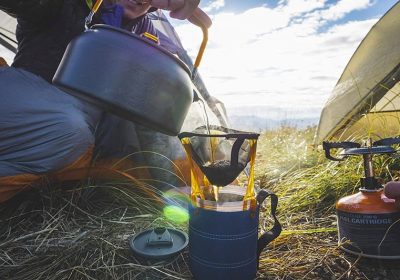
Pour-over: You’ll need a kettle for this guy too, but all you do is put a filter and coffee grounds in the pour-over, place it over your mug and pour boiling water. Great for single cups of coffee! These are also great because you can purchase BPA-free plastic ones that you don’t have to worry about breaking like glass or ceramic.
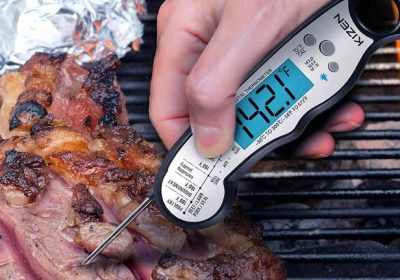
Meat Thermometer: I cannot stress enough how crucial I find a food thermometer to be in any kitchen, indoors or out. It removes any fears about fully cooked food from my mind and are usually fairly inexpensive.
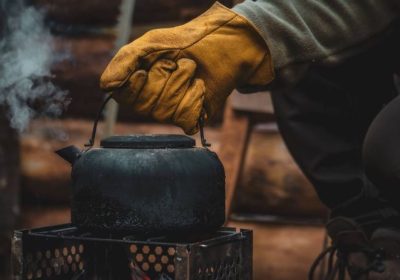
Cooking Gloves: Have you ever burnt yourself on a hot pot? I have, and while I consider myself to have a very high pain tolerance, I was basically incoherent for an hour. Bad burns should be avoided at all costs, especially if you’re backcountry camping. Get a good pair of heat resistant cooking gloves to help you grab hot pans or Dutch ovens without fear!
Campfire cooking can be the best part of camping – or the worst! Having the right equipment can help it from becoming a dreaded experience and exploring new recipes or techniques can be just as fun as they are challenging. Hopefully some of these tips will help you out!
Notes:
Please note that this post contains links, but we are not affiliated with any companies/sellers listed and do not make any commission from sales.